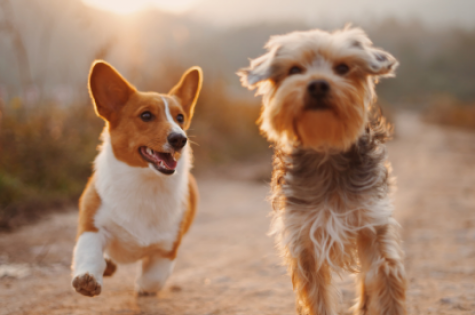For many Aussies, the lockdown restrictions of 2020 meant spending more time than ever before with their pets - or, in a lot of cases, finally adopting a new furry companion. This ultimately created a whole new dynamic for Pet Owners. Gone were the days of doggos patiently waiting to be walked, fed, and played with at the end of the workday. Instead, our furry friends grew accustomed to around-the-clock attention.
However, as Australia treads further into a Covid-normal world, pets are seeing their Owners spend significantly less time at home, be it to travel for a long weekend away or simply to head into the office a few times a week. With life seemingly more normal, there is one issue that’s rearing its head more often: separation anxiety in pets.
Whether it’s a new Covid-baby pup that’s used to its owners being home 24/7, or an older dog that’s grown especially dependent on the more constant attention, here are a few key tips to help ease your - and your pet’s - mind.
1. Be aware of symptoms
First and foremost, pay attention to your pet and any odd behaviors that might be noticeable when you leave the house, and again when you return. If your dog is feeling distressed, they may act out by urinating where they shouldn’t once you’ve left; barking or howling constantly when alone; or even destroying home furnishings by chewing or digging. At point blank this often characterises a naughty pup - however it’s worth considering separation anxiety if your time at home has changed.
2. Create home comforts
While it may be tricky to maintain all-day, every-day contact with your pet, there are a few ways you can change up the space in your home to leave your dog feeling more at ease during the hours they’re alone. Dr Nick Tan from Pawssum Vet to Home Services suggests creating a den or ‘safe space’ for your pet to provide a cosy and secure environment. This type of safe haven would ideally include a comfortable bed, toys, and an article of clothing from you in a spot in the home that they usually go to. Over time, your dog will eventually turn to this space to feel more relaxed when alone.
Another great tip from Dr Nick Tan is weaving in forms of safety cues. Sounds that usually occur when people are at home, like TV or radio, may ease the separation anxiety if left on when Owners are out.
3. Call in help
While your ability to stay home more often may have changed, there are always reliable options you can lean on as an alternative. If possible, try having friends and family visit during the day to help breakup the time your dog is alone.
Another great option is looking for Dog Walkers or Pet Sitters to help entertain your dog during the day. For example, hiring a Dog Sitter through Mad Paws is a convenient way to provide Pet Day Care while you’re at work. There’s even an option to meet a potential Sitter before booking to ensure your dog feels comfortable with them. A Sitter can help tremendously with easing separation anxiety, allowing you to slowly leave your pet for longer periods of time. This option is becoming increasingly more popular, and Mad Paws has noticed double the demand for Pet Day Care compared to last year.
Human and canine alike, it’s always tricky to adapt and feel comfortable in new living situations. However, with the right amount of patience and the above trusty tips, you’ll be on the right track to creating a much more relaxed pet during the hours you’re away.
For further information and tips from Dr Nick Tan, visit our blog on separation anxiety.
















__small.png)










